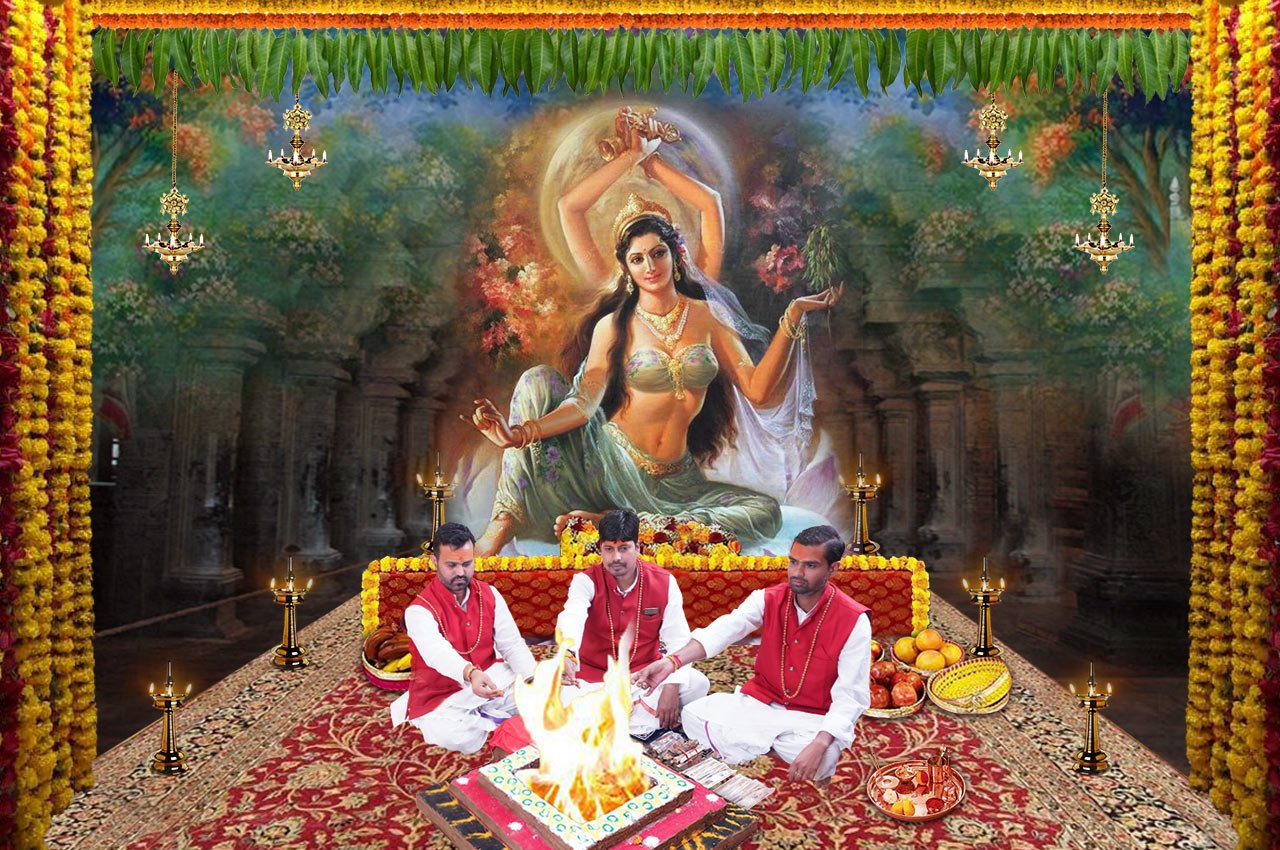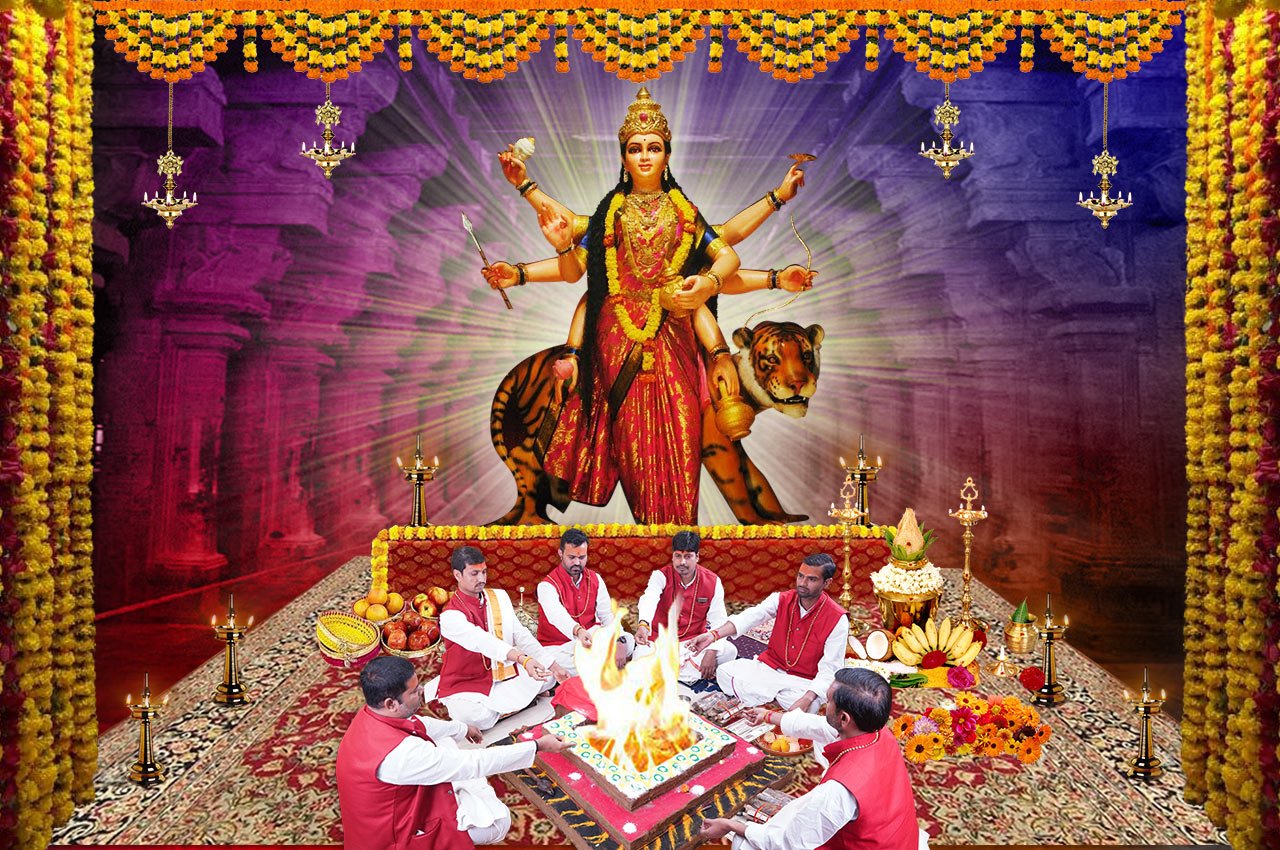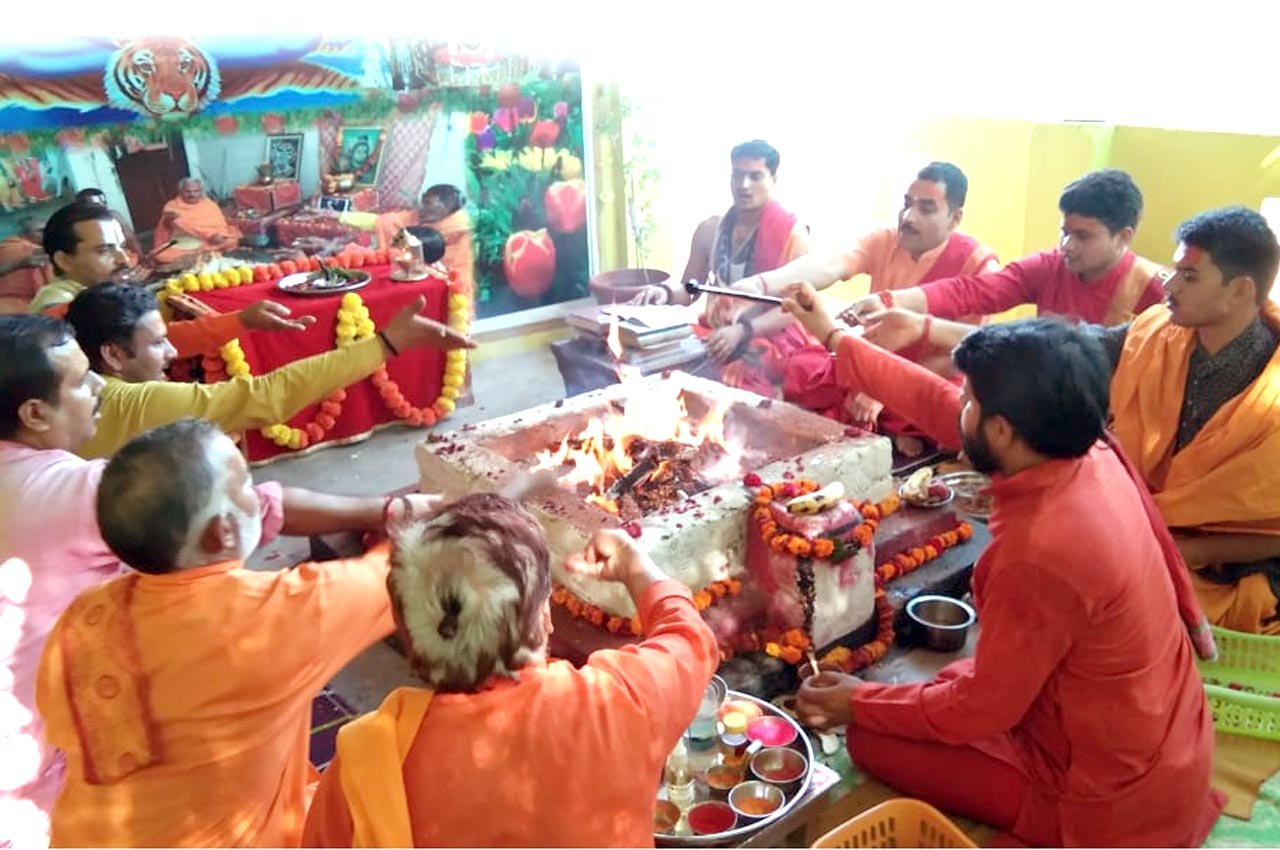Description
About Tara Devi | Significance of Goddess Tara Puja
Goddess Tara is one of the most powerful forms of the feminine energy Adi Parashakti. Tara is the second of the ten wisdom goddesses (Dus Mahavidyas) who are highly revered in Hinduism and Buddhism. The word ‘Tara’ literally translates to ‘star’. Goddess Tara’s mention can be found in Rig Veda and is considered to be one of the most powerful devis during the Vedic Period. Maa Tara is known as the goddess of compassion and the one who gives salvations to humans from the hardships of reincarnation (cycle of birth and death). Adi Parashakti took the form of Goddess Tara to end human suffering. As Per Shakti Mahabhagwat, Maa Tara is the powerful form of Maa Parvati who created a seed from which the entire universe took birth in the form of Lord Narayana.
According to a legend, when the Samudra Manthan took place, both Gods and Asuras churned the ocean. During the churning a lethal poison named halahal emerged from the ocean. In order to save the whole universe from the deadly poison, Lord Shiva drank the poison which turned His throat blue. Lord Shiva fell unconscious under its powerful effect. This is when Mahadevi Durga/Parvati appeared as Maa Tara and took Shiva on her lap. She suckled him, the milk from her breasts counteracted the poison, and He recovered.
She is also known to guide & protect one from difficult situations. According to the Tantric compilation ‘Tantrasara’, Goddess Tara is mentioned in the Mayatanra as having eight forms namely ‘Ekajata’, ‘Ugra- Tara’, ‘Mahogra’, Kameshvari-Tara, Chamunda, Nila-Sarasvati (Neelasaraswati or ‘Blue Saraswati’), Vajra-Tara and Bhadrakali.
Goddess Tara is the mother of Sakyamuni Buddha who is an avatar of Lord Vishnu. According to the iconography, Goddess Tara has a blue complexion and wears a skirt made of Tiger skin. She wears a garland made of severed human heads and Her tongue is lolling with blood oozing out of Her mouth. She has a single matted braid over Her head and is potbellied. Furthermore, Goddess Tara wears a crown made of 5 skulls connected with plates of bone. Due to Her compassionate and loving nature She is revered.
The objective of performing the Goddess Tara Puja and Yajna is attain Her divine blessing and to attain wealth and prosperity. Performing this puja also helps to offer protection from all kinds of dangers and mishaps. It also helps to get success in all undertakings and removes all obstacles that come in the way of progress. She offers guidance to Her devotees and helps to overcome troubles. Devi Tara Puja and Yajna helps to offer longevity, blesses with good health and keep diseases at bay. Performing this Puja also helps to fulfil all wishes and further helps to resolve graha doshas in horoscope.
Benefits of Online Devi Tara Puja
- Helps to appease Goddess Tara
- Safeguards from evil eye
- Offers protection from all kinds of dangers and mishaps
- Helps to ward off Planetary Doshas in the Kundali
- Attracts prosperity and riches
- Blesses with good fortune
- Offers longevity
- Blesses the Yajman with a healthy life
- Helps to keep diseases at bay
- Helps to attain success in all walks of life
- Helps to choose the right path
- Helps to take rational decisions
- Offers great vision and
- Helps to grow spiritually
- For immense abundance in all spheres of life
- For peace and protection
- For compassion, serenity, wisdom and knowledge
Devi Tara Puja Procedure | Devi Tara Puja Vidhi
Kalash Sthapana, Panchang Sthapana(Gauri Ganesh, Punyavachan, Shodash Matrika, Navgraha, Sarvotabhadra), 64 yogini Pujan, Shetrapal Pujan, Swasti Vachan, Sankalpa, Ganesh Pujan and Abhishek, Navgraha Pujan and 108 chants of each planetary mantra, Invocation of major Gods and Goddesses in Kalash, Brahman Varn, Abhishek and Puja of Idol of Tara Devi, Tara Devi Yantra Puja, Tara Devi Mantra Japa, Tara Devi Kavach recitation, Tara Devi Yajna, Aarti and Pushpaanjali.
Devi Tara Puja Mantra
Hreem Shreem Hoom Phat, Om Hreem Shreem Hoom Phat, Shreem Hreem Shreem Hoom Phat
Special Puja Samagri (Ingredients) Used in Devi Tara Puja
Some common Puja Samagri are used in all pujas like Haldi, Kum Kum, Cotton Wicks, Molly Thread, Abeer, Sindhoor, Akshat Rice, Janeau (Holy Thread), Gangajal (Ganga Water), Kapur (Camphor), Yellow Mustard, Incense Agarbatti, Attar (Fragrances), Dhoop incense, Supari (Betel Nut), Laung Clove, Elaichi (Cardamom), Kamal Gatta (Lotus Seed), Guggal, Altar Cloth, Asan (Pedestal), Kusha Patri (Kusha Ring), Honey, Sugar, Havan Sticks (Mango Stick and Navgraha Sticks Ark for Sun, Palash for Moon, Khadir for Mars, Peepal for Jupiter, Apamarga for Mercury, Audambar for Venus, Shami for Saturn, Durva for Rahu, Kusha for Ketu), Havan Powders & Herbs, Milk, Dahi, Ghee, Panchamrit, Flowers, Fruits, Sweets, Durva, Tulsi, Mango Leaf.
The above list can vary from one Deity to the Other.
The below Puja Samagri List comprises of items which are of special importance for Devi Tara Puja & Havan
Tara Yantra (At Rudra Centre Puja Services every Puja has a specific yantra which is sent in puja prasad)
Red Cloth
Red Sandalwood
Red flowers
Five types of fruits (Pomegranate and other seasonal fruits)
16 Sringaar Samagri- (Bindi, Chudiyaan, Mangalsutra, Sindoor, Mehendi, Kajal, Nath, Gajra, Maang Tika, Jhumka, Bajuband, Payal, Ring and Holy Bath )
Saubhagya Petika
Kumkum
Abhir
Kamal Gatta
Gulal





